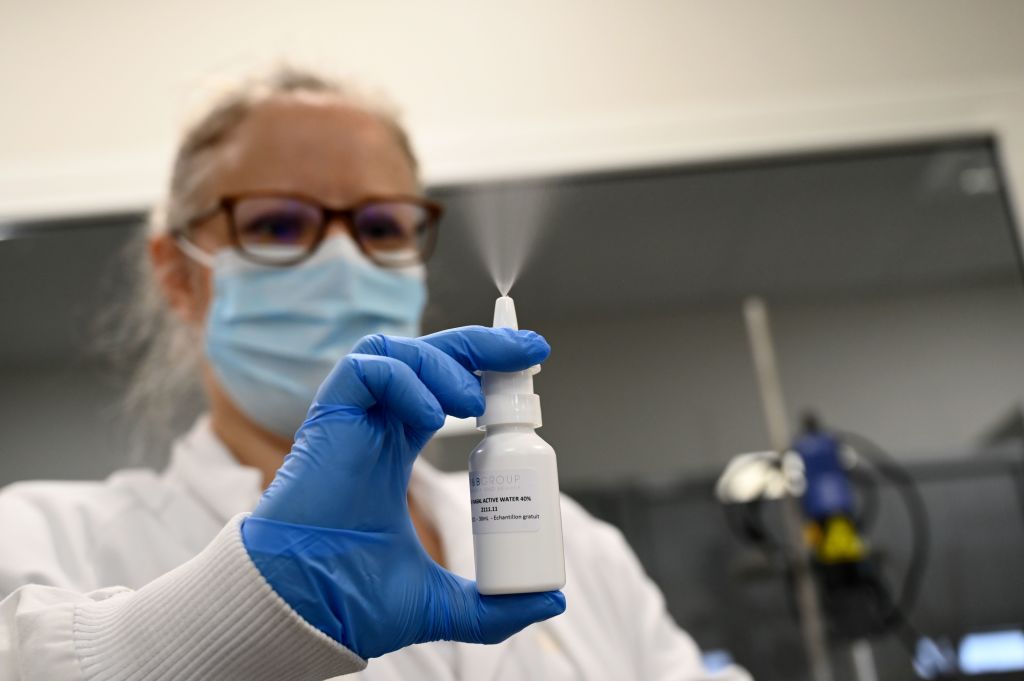Nasal spray antibody treatment shows promise against COVID-19, variants in mouse study


Researchers in Texas report in the journal Nature that a COVID-19 antibody treatment they engineered has proved very effective at neutralizing more than 20 variants of the new coronavirus, at least in a study involving mice.
A lead author of the study, antibody engineer Zhiqiang An at the University of Texas Health Science Center at Houston, said antibody treatments for COVID-19 have not been very popular among doctors, partly because they are delivered intravenously and require high doses to be effective. The new treatment, created by attaching an immunoglobulin M (IgM) neutralizing antibody to the IgG antibodies used in most current antibody drugs, is delivered through a nasal spray.
"Nasal delivery would allow for lower doses and direct access to the respiratory tract and lung," Reuters reports, citing the researchers. "It also could be self-administrated without medical supervision," and perhaps purchased at a pharmacy.
The Week
Escape your echo chamber. Get the facts behind the news, plus analysis from multiple perspectives.

Sign up for The Week's Free Newsletters
From our morning news briefing to a weekly Good News Newsletter, get the best of The Week delivered directly to your inbox.
From our morning news briefing to a weekly Good News Newsletter, get the best of The Week delivered directly to your inbox.
The researchers report that when they sprayed the designer IgM antibody into the noses of mice six hours before or after the mice were infected with the coronavirus, it sharply cut the amount of virus in the mice's lungs two days later. This is a "big feat of engineering," said Guy Gorochov, an immunologist at Sorbonne University in Paris, but the study leaves a lot of open questions about how effective the treatment will be in humans. California biotech IGM Biosciences collaborated in An's study and will conduct human trials of the treatment.
A free daily email with the biggest news stories of the day – and the best features from TheWeek.com
Peter has worked as a news and culture writer and editor at The Week since the site's launch in 2008. He covers politics, world affairs, religion and cultural currents. His journalism career began as a copy editor at a financial newswire and has included editorial positions at The New York Times Magazine, Facts on File, and Oregon State University.
-
 Blue Origin launches Mars probes in NASA debut
Blue Origin launches Mars probes in NASA debutSpeed Read The New Glenn rocket is carrying small twin spacecraft toward Mars as part of NASA’s Escapade mission
-
 Dinosaurs were thriving before asteroid, study finds
Dinosaurs were thriving before asteroid, study findsSpeed Read The dinosaurs would not have gone extinct if not for the asteroid
-
 SpaceX breaks Starship losing streak in 10th test
SpaceX breaks Starship losing streak in 10th testspeed read The Starship rocket's test flight was largely successful, deploying eight dummy satellites during its hour in space
-
 Rabbits with 'horns' sighted across Colorado
Rabbits with 'horns' sighted across Coloradospeed read These creatures are infected with the 'mostly harmless' Shope papilloma virus
-
 Lithium shows promise in Alzheimer's study
Lithium shows promise in Alzheimer's studySpeed Read Potential new treatments could use small amounts of the common metal
-
 Scientists discover cause of massive sea star die-off
Scientists discover cause of massive sea star die-offSpeed Read A bacteria related to cholera has been found responsible for the deaths of more than 5 billion sea stars
-
 'Thriving' ecosystem found 30,000 feet undersea
'Thriving' ecosystem found 30,000 feet underseaSpeed Read Researchers discovered communities of creatures living in frigid, pitch-black waters under high pressure
-
 New York plans first nuclear plant in 36 years
New York plans first nuclear plant in 36 yearsSpeed Read The plant, to be constructed somewhere in upstate New York, will produce enough energy to power a million homes



